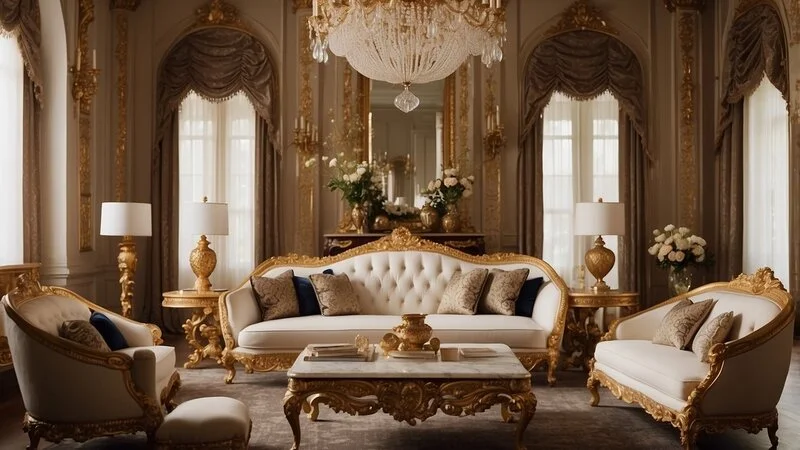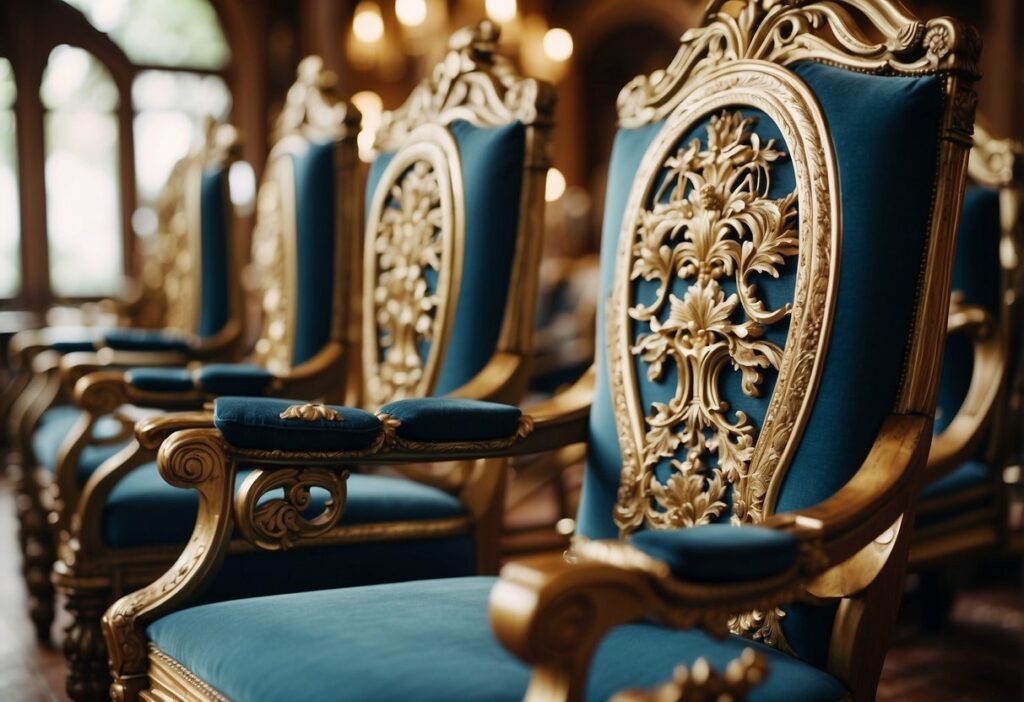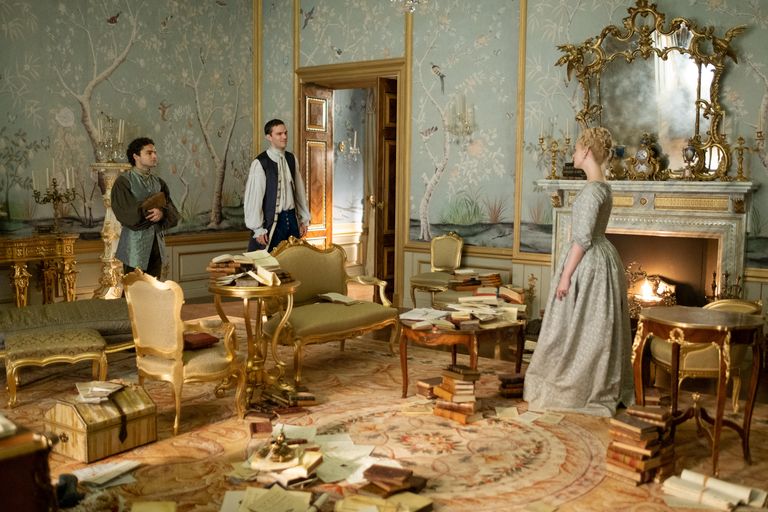Introduction to Catherine the Great and her reign
Catherine the Great, one of Russia’s most illustrious rulers, reigned from 1762 to 1796. Her era marked a transformation in Russian culture and politics, but perhaps one of her most enduring legacies lies in the exquisite furniture that adorned her palaces. This furniture not only reflected her personal taste but also symbolized an empire embracing Western European elegance. As we delve into Catherine the Great’s furniture, we’ll explore how these pieces encapsulate imperial grandeur and continue to inspire admiration today. Each chair and table tells a story—a glimpse into a world where beauty met power, all under the watchful eye of this remarkable empress.
The Influence of Western European Design on Russian Furniture
Catherine the Great’s reign marked a pivotal shift in Russian aesthetics. Her admiration for Western European art and architecture profoundly transformed the furniture landscape.
Influenced by French Rococo and Neoclassicism, her taste was nothing short of lavish. Designers from France, Italy, and Germany brought their expertise to St. Petersburg. This collaboration infused Russian interiors with opulence.
Delicate curves, intricate carvings, and rich fabrics became signatures of this era. Pieces that adorned Catherine’s palaces were not merely functional; they told stories of grandeur and sophistication.
The merging of styles created an artistic dialogue between East and West. It set new standards for elegance in Russia that resonate even today among collectors and enthusiasts alike.
As Western techniques mingled with traditional craftsmanship, a unique style emerged—one that symbolized power while embracing beauty in every detail.
The Impact of Catherine’s Personal Style on Furniture

Catherine the Great’s personal style was a reflection of her bold character and vision. Her taste in furniture transcended mere aesthetics, embodying power and sophistication.
She favored opulent designs that showcased intricate craftsmanship. This choice influenced artisans to elevate their work, merging practicality with artistic flair.
Her penchant for luxurious fabrics like silk and velvet became standards in Russian interiors. Bright colors and elaborate patterns were hallmarks of Catherine’s aesthetic, transforming traditional styles into something uniquely imperial.
Catherine also embraced eclecticism by incorporating Western European trends into her collection. This blend created an exciting dialogue between cultures, enriching Russian design beyond local influences.
The result? Furniture pieces that not only served functional purposes but also narrated stories of elegance and prestige. Each item reflected her quest for cultural refinement while asserting Russia’s place on the world stage through artful décor.
A Look at the Most Iconic Pieces of Catherine’s Collection
Catherine the Great’s furniture collection is a stunning reflection of her taste and ambition. Among the pieces, the exquisite writing desk stands out. Adorned with intricate marquetry and gilded accents, it served as a statement of power.
The opulent chaise lounge is another iconic item. Its elegant curves and rich upholstery invite admiration while showcasing Catherine’s flair for comfort blended with sophistication.
Equally remarkable are her grandiose dining tables. Crafted from fine woods, they hosted lavish banquets that shaped Russian diplomacy and culture.
The ornate mirrors in her chambers not only added depth to rooms but also symbolized self-reflection—both literally and metaphorically—during a transformative era for Russia.
Each piece narrates stories of imperial life, encapsulating an entire period marked by elegance and authority.
How These Furniture Pieces Reflect Imperial Elegance
Catherine the Great’s furniture embodies a distinct imperial elegance that resonates through its intricate designs. Each piece showcases remarkable craftsmanship, often adorned with gilded accents and rich fabrics that speak to the opulence of her court.
The use of luxurious materials like silk, velvet, and mahogany creates an atmosphere of grandeur. Chairs and tables feature delicate carvings that reflect both artistry and power, reminding us of Catherine’s influence.
Moreover, these furnishings were not just for decoration; they served as symbols of status. Their placement in palaces communicated authority while embodying comfort befitting royalty.
Patterns inspired by nature or mythology add another layer to their allure. Such details invite admiration and evoke a sense of history intertwined with personal taste. The elegance captured in each item remains timeless, continuing to inspire modern interpretations today.
The Legacy of Catherine the Great’s Furniture Today

Catherine the Great’s furniture continues to inspire designers and collectors around the world. Her bold fusion of Western styles with Russian tradition created a new aesthetic that resonates even today.
Museums showcase her exquisite pieces, allowing visitors to appreciate their artistry firsthand. The elegance found in her collection often influences modern interior design trends, merging opulence with functionality.
Contemporary artisans frequently draw on Catherine’s love for intricate details and luxurious materials. They channel this imperial spirit into custom furniture, ensuring her legacy endures in contemporary settings.
Her influence is also visible in high-end boutiques that sell reproductions inspired by her original designs. These pieces evoke a sense of history while catering to modern tastes, proving that classic elegance never goes out of style.
Catherine’s vision has transcended time, reminding us all of the rich tapestry woven through Russian heritage and imperial sophistication.
Conclusion: Exploring the Timeless Beauty of Imperial Russian Design through Catherine’s Furniture
Catherine the Great’s furniture serves as a window into an era defined by grandeur and sophistication. Each piece tells a story, reflecting both her personal taste and the cultural shifts of 18th-century Russia.
The intricate designs showcase Western influences while maintaining a distinct Russian identity. The craftsmanship is unparalleled, with artisans pouring their skills into every detail.
From opulent chairs to stunning tables, these artifacts evoke a sense of imperial elegance that still resonates today. They remind us of Catherine’s vision—a blend of power and beauty that transformed not just her palaces but also Russian society.
Exploring this collection offers insights into how art and culture intertwine across time, leaving an indelible mark on history. The beauty found in Catherine’s furniture continues to inspire designers and collectors alike, ensuring its legacy endures for generations.
FAQs
Catherine the Great’s furniture represents a fascinating chapter in the narrative of imperial elegance. Her reign, marked by cultural ambition and artistic patronage, left an indelible mark on Russian design.
Her collection is not just about aesthetics; it tells a story of transformation and influence. The blend of Western European styles with traditional Russian craftsmanship created pieces that are as functional as they are beautiful.
Through her personal style, Catherine cultivated an environment where art and comfort coexisted seamlessly. Each piece serves as a testament to her vision—a remarkable fusion of grandeur and practicality.
As we explore some iconic items from Catherine’s collection, such as the exquisite gilded chairs or intricately designed tables, we notice how they encapsulate the opulence of her era. These masterpieces beckon us into a world steeped in history yet still relevant today.
The legacy of these furniture pieces continues to inspire contemporary designers while offering insights into 18th-century life at court—an era defined by elegance and sophistication.
Exploring Catherine the Great’s furniture allows us to appreciate not only its beauty but also its significance within a broader historical context. It challenges us to look beyond mere decoration—to recognize how each item reflects identity, power dynamics, and artistry in imperial Russia.
What materials were used in Catherine the Great’s furniture?
Catherine’s furniture often featured luxurious materials like mahogany, walnut, lacquered wood for surfaces adorned with gold leafing or intricate marquetry techniques.
Where can I see examples of Catherine the Great’s furniture today?
Many pieces from her collection can be seen at museums such as The State Hermitage Museum in St.
Petersburg which houses some breathtaking artifacts from her time.
How did Western European influences shape Russian furnishings during this period?
Western influences introduced new styles such as Rococo and Neoclassicism that transformed traditional designs into something more ornate yet functional appealingly blended elements from both cultures.
Is there any modern interpretation inspired by Catherine’s style?
Yes! Contemporary designers frequently draw inspiration from imperial
Also read: Eplus4Car








One thought on “Catherine the Great’s Furniture A Glimpse into Imperial Elegance”